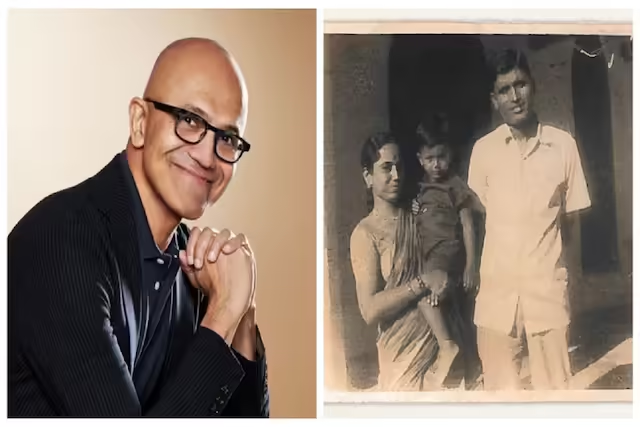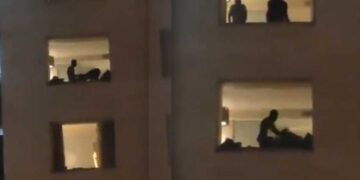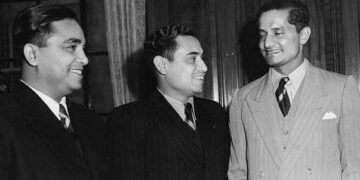Dr. Rajendra Prasad (English: Dr. Rajendra Prasad, born- December 3, 1884, Jiradeu, Bihar; died- February 28, 1963, Sadakat Ashram, Patna) was the first President of India. Rajendra Prasad was a very talented and learned person. Rajendra Prasad was the only President of India to serve two terms.
Birth
Rajendra Prasad was born on December 3, 1884 in Jiradeu, a small village in Bihar province. Rajendra Prasad was the youngest member of a big joint family, hence he was loved by everyone. The relations between Rajendra Prasad’s family members were deep and soft. Rajendra Prasad had great affection for his mother and elder brother Mahendra Prasad. The population of Jiradeu village was mixed. But everyone lived together. Rajendra Prasad’s earliest memory is of playing ‘Chikka and Kabaddi’ with his Hindu and Muslim friends. During his teenage years, he used to look forward to the festival of Holi and his Muslim friends also used to participate in it and on Muharram, Hindus used to take out tazais. ‘Rajen Babu’ (Rajendra Prasad) loved listening to Ramayana and watching the local Ramleela in the village monastery. The atmosphere at home was also one of complete faith in God. Rajendra Prasad’s mother often told him stories from Ramayana and also sang hymns. The foundation of his strength of character and generous outlook was laid in his childhood itself.
At the age of five, Rajendra Prasad started learning Persian from a Maulvi Sahib. After this he went to Chhapra District School for primary education. But even before completing his school education, at the age of 13, Rajendra Babu married Rajvanshi Devi.
Even after marriage, she continued her studies from TK Ghosh Academy, Patna. His married life was very happy and due to this there was no hindrance in his studies or other work. At the age of 18, he appeared for the entrance examination of Kolkata University. He stood first in that entrance examination. In the year 1902, he took admission in the famous Presidency College, Kolkata. His talent attracted the attention of scholars like Gopal Krishna Gokhale and Bihar-luminary Anugrah Narayan Sinha. In 1915 he passed the Master of Laws (LLM) examination with a gold medal and later obtained a Doctorate in Law.
Dr. Rajendra Prasad was one of the foremost leaders of the Indian independence movement and played an important role as the President of the Indian National Congress. He also made an important contribution in the making of the Indian Constitution. Gandhiji’s dedicated soldier Rajendra Prasad first met Gandhiji in Kolkata in 1915, when a meeting was organized in Gandhiji’s honour. He saw Gandhiji again in December 1916 at the Congress session in Lucknow. Here Champaran’s farmer leaders Rajkumar Shukla and Brajkishore Prasad appealed to Gandhiji to come to Champaran. A resolution was also taken in the conference regarding the situation in Champaran. The year 1917 was an important turning point in the life of Rajendra Prasad. He came close to Gandhiji in the Kolkata session of Congress, but he did not know that while going to Champaran on a fact-finding mission, Gandhiji would first go to his house in Patna. On Gandhiji’s call, he reached Motihari with volunteers and stayed with Gandhiji wherever he went.
He entered the field of journalism to write on national issues. He wrote articles for revolutionary publications including “Searchlight” and “Desh”. They actually raised money for these newspapers. After the resignation of Subhas Chandra Bose, he was elected as the President of the Indian National Congress at the Bombay session of the Congress in 1937. Under his chairmanship, Congress passed the Quit India Resolution on August 8, 1942. Rajendra Prasad was then arrested and sent to Bankipur Central Jail, where he spent the next three years. He was released in 1945.
In 1946, he was selected as the Minister of Food and Agriculture in the interim government of Jawaharlal Nehru. Subsequently, he was elected as the President of the Constituent Assembly on 11 December 1946, which functioned as the provisional parliament. On 26 January 1950, he was elected as the first President of the Republic of India. He was re-elected President in 1952 and 1957. He is the only President in the history of India to achieve this feat. He was awarded the Bharat Ratna, the country’s highest civilian honour, in 1962 for his contribution to the country’s progress during the nationalist movement and during his tenure as President of India. He died on 28 February 1963 in Patna. Before this he was ill. After retiring from the post of President, he spent the rest of his life in Bihar.






